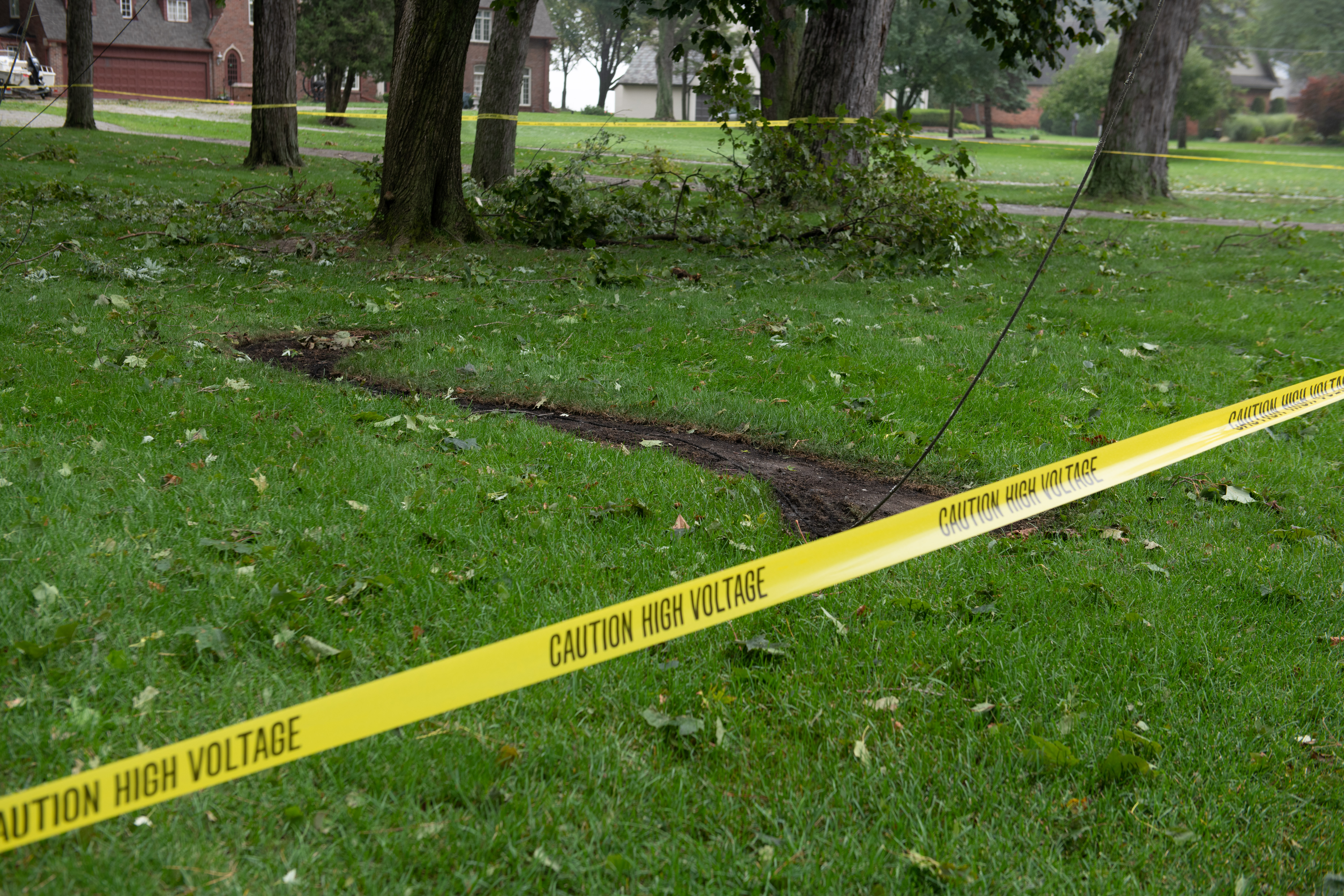After a major storm, it can take the DTE Energy Storm Response Teams several hours to analyze the extent of damage and develop restoration schedules. There are detailed steps we must take before we can provide restoration estimates to customers, the first being damage assessment. Here are your most asked questions about the damage assessment process.
What is storm damage assessment?
Damage assessment is the first step in the restoration process after a storm. Because DTE Energy’s service territory includes 40,000 miles of wires and 2.3 million customers, assessing storm damage can be a huge job for our Storm Response Teams. When a storm is on the way, crews are on standby waiting until the weather clears and it’s safe for them to begin their storm assignments.
We begin damage assessment by sending out helicopters and drones to get an aerial view of the damage. Next, we deploy crews into the field when it’s safe to get a closer look at the extent of the damage. Crews determine the exact location and extent of damage; what equipment is needed to repair the electrical equipment; and how long it will take to restore power to each customer group, or circuit. Field crews report all findings back to our Storm Response Teams. They use the information to prioritize which circuits to restore first. Our goal is always to restore as many customers as possible in the shortest amount of time. For more information on how we prioritize customers during outages, visit our storm restoration blog.
Storm Response Teams analyze all information and use it to provide customers with a global estimate for restoration. A global estimate is our team’s prediction of when we believe power will be restored based on initial damage assessment. For example, we might announce that we expect to have 50% of the customers’ power back on by the end of the day.
Crews then begin making repairs. During the work, crews get a closer look at the damage and sometimes discover “trouble behind trouble.” This is when there is one issue that caused the initial outage and another issue that’s preventing us from reenergizing the line. Our Storm Response Teams will use the information reported back from crews during repairs to provide customer-specific restoration estimates. An example of a customer-specific estimate would be that we expect to have your power restored by 5 p.m. on Thursday.
A DTE representative said a restoration estimate will be provided once it’s safe to enter the area. What does that mean?
Safety is our No. 1 priority. Because electrical equipment can cause fatal injuries, our crews must be cautious and follow procedures and safety guidelines precisely. Severe weather conditions like rain, lightning and strong winds can make it unsafe for crews to work on electrical equipment. As soon as weather conditions permit us to safely begin restoration work, our crews assess the extent of the damage and begin restoration immediately.
Additionally, crews cannot always safely assess storm damage in the dark because it is difficult to see electrical equipment and damage. It also makes it hard to see downed wires, which can cause life-threatening injuries.
Finally, it’s common for limbs or trees to fall during severe weather. Sometimes these types of obstructions need to be cleared, and the area must be secure before the lineman can safely assess and repair electrical equipment.
Why are you still assessing and not restoring my power?
- Downed power lines: Downed power lines can cause severe or fatal injuries, so our crews must secure the area around downed lines before moving on to assessing electrical equipment further.
- Ongoing storms: Crews may have to wait for the extreme weather to pass or temporarily pause working if additional storms come through our service territory.
- Number of outages: Extremely large storms take longer to restore power. We will deploy as many crews as needed to get the job done. In some cases, that means DTE will recruit the help of line workers from out of state to help restore power quicker.
- Equipment accessibility: As we talked about above, we sometimes must take extra time to remove obstructions before we can safely enter an area. There are other times when we cannot get our bucket trucks to the electrical equipment that needs to be evaluated. When those instances occur, crews must climb the poles to assess the equipment.
To find more answers to your storm questions, visit empoweringmichigan.com. Get real-time updates and information about outages at our outage center or by following us on Nextdoor, Facebook and Twitter.

